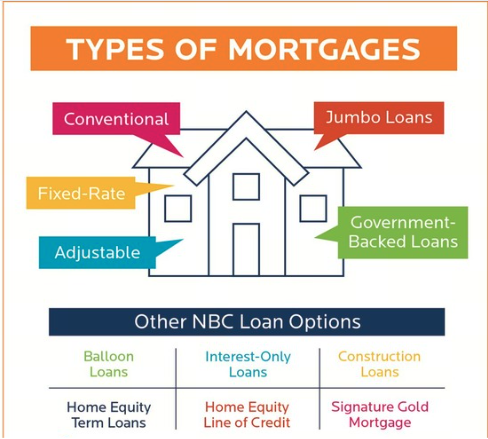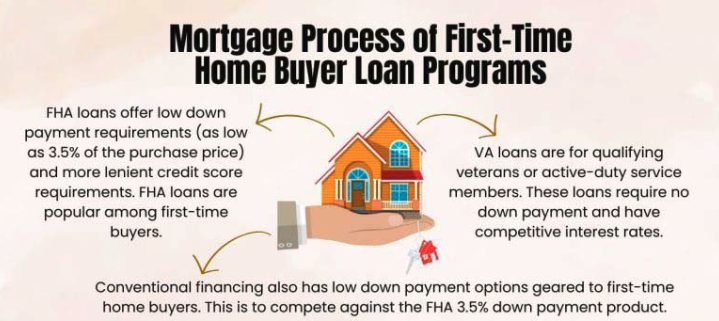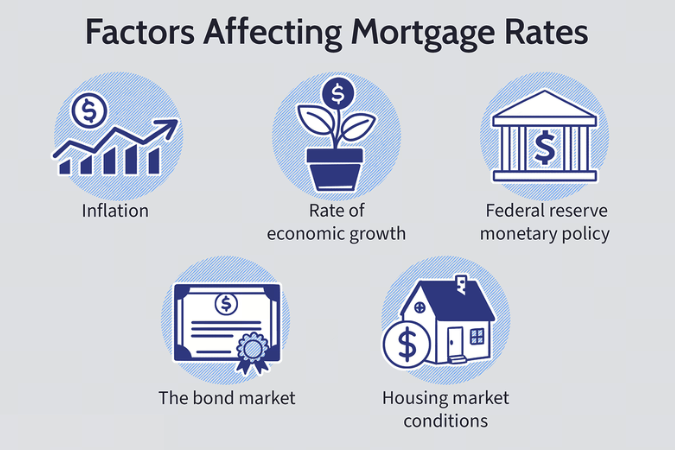
As the mortgage landscape evolves, understanding upcoming trends is crucial for borrowers and lenders alike. In 2025, expect to see advancements in technology, shifts in interest rates, and changing consumer preferences shaping the market. Embracing digital solutions, sustainable practices, and innovative financing options will redefine homeownership, making it essential to stay informed about these transformative developments.
The landscape of mortgage loans in the USA is evolving rapidly, influenced by technological advancements, shifting consumer preferences, and economic fluctuations. As we look ahead to 2025, several key trends are expected to redefine the mortgage lending industry and shape the way borrowers interact with lenders.
The **digitalization** of mortgage processes is one of the most significant trends expected to impact the industry. By 2025, more lenders will likely embrace technology to streamline the application process. This includes the use of **online platforms**, mobile apps, and automated underwriting systems that enhance the efficiency of securing a mortgage. Borrowers will benefit from a more user-friendly experience, allowing them to manage their applications from the comfort of their homes.
Non-bank lenders are becoming increasingly prominent in the mortgage market. These institutions often offer more competitive rates and a more personalized experience compared to traditional banks. By 2025, we can expect to see an even greater share of the mortgage market occupied by non-bank lenders, driven by their flexibility and innovative approaches to lending. Borrowers may find that non-bank lenders can cater to unique financial situations, providing alternatives that traditional banks may overlook.
As environmental concerns continue to gain traction, the concept of **sustainable borrowing** is likely to become more mainstream in the mortgage industry. Lenders may start offering incentives for energy-efficient homes or green renovations. By 2025, we could see mortgage products that specifically cater to eco-friendly properties, allowing borrowers to secure better rates for making sustainable choices. This trend will not only benefit the environment but also appeal to a growing demographic of eco-conscious homebuyers.
Interest rates are a crucial factor influencing the mortgage market. As we move towards 2025, fluctuating interest rates will continue to shape borrowing behaviors. While low rates can stimulate homebuying, rising rates could lead to a slowdown in mortgage applications. It’s essential for potential homeowners to stay informed about **interest rate trends** and how they might affect their purchasing power. Industry experts predict that borrowers will need to be more strategic in timing their mortgage applications to secure favorable rates.
Artificial intelligence (AI) and big data analytics are set to revolutionize the mortgage industry by 2025. Lenders will increasingly utilize these technologies to assess borrower risk, streamline operations, and enhance customer service. AI can help predict borrower behavior, enabling lenders to tailor their offerings to meet specific needs. Moreover, big data can provide insights into market trends, allowing lenders to make more informed decisions. As a result, borrowers may experience faster approvals and customized loan products that better fit their financial situations.
Consumer preferences are shifting, with younger generations entering the housing market. These tech-savvy homebuyers expect a seamless, digital experience when securing a mortgage. By 2025, lenders will need to adapt to these evolving preferences by offering intuitive online tools and personalized communication. The importance of social media and online reviews will also grow, as prospective borrowers increasingly rely on feedback from their peers when choosing a lender.
As the mortgage landscape becomes more complex, the importance of **financial education** will become evident. By 2025, lenders may take a more proactive role in educating borrowers about their options, helping them navigate the mortgage process. This could involve workshops, online resources, and personalized consultations aimed at empowering consumers to make informed decisions. A well-informed borrower is more likely to choose the right mortgage product, leading to greater satisfaction and fewer defaults.
In response to changing market conditions, alternative financing options are gaining traction. By 2025, we may see an increase in **shared equity agreements**, **rent-to-own** arrangements, and other innovative financing solutions. These alternatives can provide pathways to homeownership for individuals who may struggle to secure traditional mortgage financing. Lenders embracing these models will likely attract a broader audience, fostering inclusivity in the housing market.
As we approach 2025, staying informed about the evolving trends in mortgage loans is crucial for both borrowers and lenders. The future of mortgage lending in the USA promises to be more digital, consumer-focused, and innovative. By understanding these trends and adapting to them, stakeholders in the mortgage industry can ensure they remain competitive and meet the needs of a diverse range of borrowers. Keeping an eye on these developments will be essential for anyone looking to navigate the mortgage landscape successfully in the coming years.

Understanding Mortgage Loan Types in the USA: A Comprehensive Guide for 2025

How to Secure the Best Mortgage Loan Rates in the USA for 2025

Navigating the Mortgage Loan Process in the USA: Tips for First-Time Homebuyers in 2025

Impact of Economic Changes on Mortgage Loans in the USA: What to Expect in 2025

Innovations in Mortgage Loans: Exploring Technology’s Role in the USA by 2025".

Best Mortgage Loans in the USA 2025: A Comprehensive Guide

The Future of Small Business Loans: Trends to Watch in the USA for 2025
The Future of Online Advertising in the USA: Trends to Watch in 2025